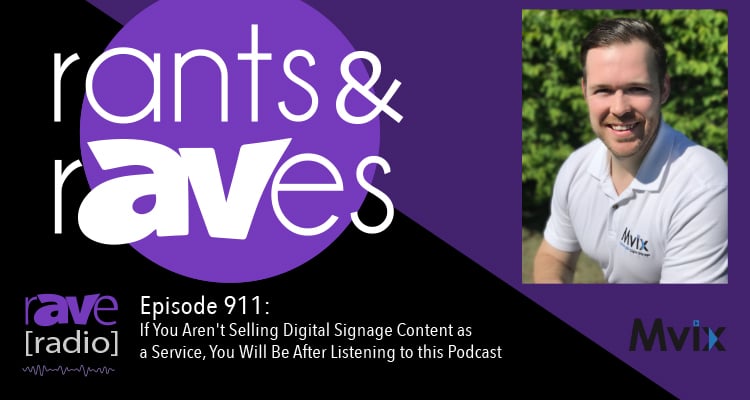Keeping Content Relevant — Length, Loops, and Time of Day
 The focus of this series “Power of Content” is to help people with content strategies and how they relate to digital signage. See the other parts here.
The focus of this series “Power of Content” is to help people with content strategies and how they relate to digital signage. See the other parts here.
One of the strongest aspects of digital signage in connecting with viewers is its ability to present an ever-changing mix of content. That, in turn, adds a level of complexity to the content decision that doesn’t exist in paper forms, such as determining how long each piece of content needs to be on the screen and how frequently the entire set of content pieces — the playlist — will be repeated or replaced by a different playlist. The wait time and length of the playlist loop are directly connected.
One needs to track both to ensure the messages are being absorbed by viewers and that viewers are being presented with the right number of messages while they are within range of the on-screen content. The type of network immediately gives a clue to how much content can be employed and how long it needs to (or can) play on-screen. For most Point of Transit (POT) networks, the available time is very short because the viewer has only a few seconds, in some cases, to see the screen. So the content is brand oriented, relies more heavily on images than a lot of words, and has eye-catching action. At a convenience store, the average consumer spends just 3 minutes inside — more time than with a POT, but still enough time for the digital signage to make an impression that has an impact on purchasing. So the playlist will consist of short content segments of 10 to 15 seconds each. Of course, each venue is specific, and geography and local issues may figure into this calculus. Take a bank, for example. In Malaysia, the wait time to interact with a teller may be 40 minutes, whereas in the United States, the average wait time is about 6 minutes. A playlist that works in the U.S. bank would have segments lasting perhaps 15 to 30 seconds at most, and the entire loop would replay every 5 minutes or so. This approach would not be effective with Malaysian customers, who would wind up being exposed to the same content loop eight times while waiting. There, a longer playlist and potentially longer content segments are appropriate, with a playlist that could last a half hour.
The second component that directly affects how many times a piece of content plays on any one screen is determined by frequency of visits at the venue, which is a huge consideration that will keep the content fresh and watched. This is more or less difficult based on the type of network. In a POS network in a department store, content can be changed once a month because most people are unlikely to visit more frequently and therefore have less chance to become overexposed. In a convenience store, where the average visitor may come in for coffee three mornings a week — or even every day — it’s vital to refresh the content on an almost daily basis. Internal communication networks have a significant challenge with this, more so than any other network, simply because the viewer is there every day of the workweek for 8 to 10 hours a day.
Changing content based on what time of day it is and what day of the week it is can critically affect the impact of digital signage content on customers and associates. The same loop that is effective for the demographics of morning customers or midweek customers will not necessarily appeal to customers who frequent the business at other times. In addition, the employees of the business can easily become annoyed or bored with an overly repetitious loop of content. The danger is that associates may communicate that feeling — even unconsciously — to customers, negating some of the value of the screens. Or they may simply tune it out altogether, eliminating the screens’ usefulness as training or employee information tools. A simple approach is to change the loop of content three times a day: morning, midday, and afternoon. This will keep associates happy and also creates programming that is diverse to the customer. It’s also important to think about changing the order of the content within each playlist as it is repeated. The content can still be delivered in an overall pattern that is effective for the marketer in reaching different customers, but that doesn’t appear to be overly patterned to either customers or associates.
A more sophisticated approach is to add and delete pieces of content throughout the day and week to keep playlists fresh. Like a radio station playing popular music, hit songs are repeated often, but not at the same time every hour, and new songs are brought into the mix as others are taken out to create variety and interest and keep people listening. The same idea applies here; continuous small changes to the overall content, plus shuffling its order, will prevent customers and associates from tuning out.
Along with the dwell time is also the speed at which the message is delivered. This resonates directly with the type of network. In a POS network, delivering the attraction message (what will draw the viewer to the screen) in the first 2½ seconds is critical to getting the required attention. Next the value proposition (why do I want this) needs to be delivered within 3 to 10 seconds, followed immediately by the call to action within 15 seconds. The result is that within 15 seconds, the viewer has a complete story that can affect a behavior change. This is true for many types of POS networks, but it is not always the case. A spa store is going to have a completely different speed of message than a grocery store. The speed of message at the spa and hot tub store is slower and more relaxing based on the atmosphere of the venue and type of products. But, again, if the message is compelling and useful (not just about price), the speed of delivery can be slowed down to become the antithesis of a very busy shopping experience, such as the grocery store. A message that slows the consumer down with useful tips about healthy food can be a reprieve in the din of a grocery shopping experience.
The time of day, the activities in which the viewer is engaged, and even the weather can be important considerations in developing content. Combining the viewer’s profile with the network’s environment will help the programmer make important decisions about how to assemble individual content elements into complete programming loops and how to determine the length and frequency of change of each element and loop. Ensuring the content is relevant in the eye of the viewer is what will get it noticed and lead to it having the intended effect.





